

|
|
 |
|
λ 14°12´37" φ 45º06´32" |
Gallery 1 |
||
|
Celestron 8" |
Solar System Astrophotography
|
||
|
White-light photography of Solar photosphere with sunspots.
The Sun taken from Plominsko Zagorje with 120 mm f/1200 mm telescope refractor.
|
|||
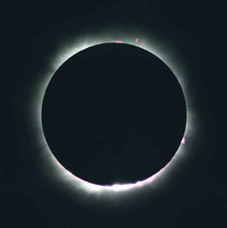 |
Photograph of the corona
- the Sun’s lower atmosphere at
a total eclipse of the Sun 1999.
Celestron 5" scope at f/10.
|
||
|
Canon EOS 5050 with 300mm lens at Super Polaris Mount. |
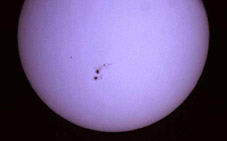 |
Photograph of solar sunspots. | |
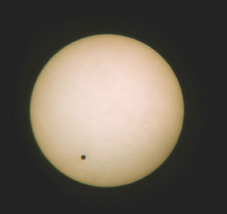 |
Transit of Venus Across the Sun on 8 June 2004. 1/30 second exposure with Celestron 8" telescope at f/10 on Kodak Gold 200 film. | ||
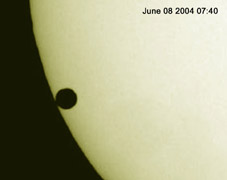 |
On 8 June 2004, observers throughout Europe, as well as most of Asia and Africa, will be able to witness a very rare astronomical phenomenon when the planet Venus lines up directly between Earth and the Sun. Seen as a small black disk against the bright Sun, Venus will take about 6 hours to complete its crossing of the Sun's face - known as a 'transit'. | ||
|
Celestron 8" with tele-extender for eyepiece projection photography. Telescope Tele-Extender is used for high-power lunar, solar and planetary photography as well as for extreme terrestrial photography. |
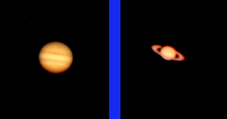 |
Jupiter and Saturn. 1/60th second exposure with Celestron 8" telescope with 10mm eyepiece projection using Kodak Gold 400 film. | |
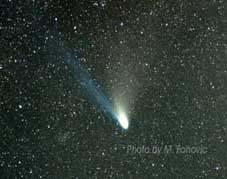 |
The Comet Hale-Bopp. This shot was taken piggyback using a 135mm telephoto lens at f2.5 for 20 minutes. Film Kodak Royal Gold 200, camera Zenith E. | ||
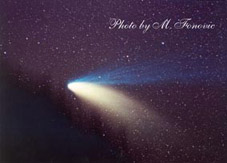 |
The Comet Hale-Bopp was one of the brightest comets this century, and perhaps the brightest intrinsically in human history. If only our closest approach wasn't 100 million miles, this comet may have been visible in daylight. Even at 100 million miles and with the tail pointing mostly away from the Earth, it was a wonder to behold. This shot was taken piggyback using a 135mm telephoto lens at f2.5 for 20 minutes. My best shot of Hale Bopp. | ||
|
Cameras Canon EOS 50E, and Canon EOS 350D. |
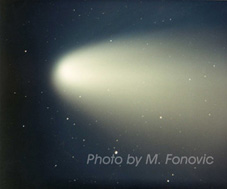 |
Here is a close up shot of the nucleus area of Hale-Bopp taken through a Celestron 8 telescope (with focal reducer f/6.3). Exposure was about 12 seconds on Fujicolor NPH 400 film. Taken from Mt. Ucka in Istria. | |
 |
The Comet Hale-Bopp 30 second exposure on Kodak Royal Gold 400, using a Zenit - E camera with a 135mm f2.0 lens on equatorial mount / sideral drive. |
||
 |
Moon in evening sky. 1/60 second exposure with 300mm camera lens and Kodak Gold 400 film. | ||
|
|
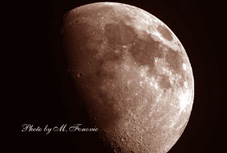 |
Moon taken from Plominsko Zagrorje with Celestron 11" in prime focus. | |
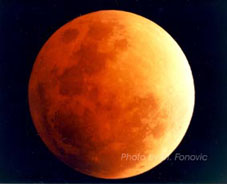 |
A 4 second exposure of a partial Lunar eclipse. 1/60 second exposure with Celestron 11" telescope at prime focus f/6,3 and Kodak Gold 400 film. | ||
|
Photos are presented to croatian and international public thru the many magazines. |
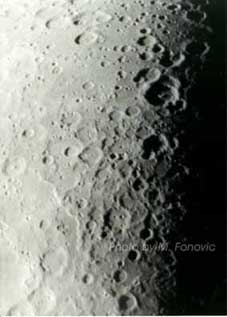 |
Lunar surface taken from Plominsko Zagorje, with Celestron 8" telescope with 10mm Super Plossl eyepiece projection. The film used was Agfacolor HDC 200 for a 3 second exposure. | |
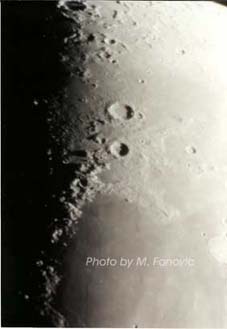 |
The craters Aristoteles and Eudoxus on the Moon taken with Celestron 8" f/10. The film used was Fuji Super G 800 for a 1/250th of a second exposure.
|
||
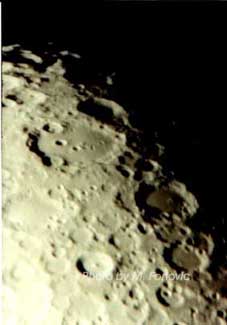 |
The craters taken with Celestron Ultima 10" telescope, 10mm eyepiece projection. The film used was Kodak PRO Gold 400 for a 6 seconds exposure. |
||
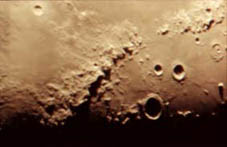 |
Photograph of mountains along the edge of a mare. These mountains were probably thrown up by the impact that created the mare. | ||
|
Gallery 2 |
|||
|
webmaster: m. fonovic © 2008 - 2023 All rights reserved. |